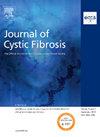elexacaftor/tezacaftor/ivacaftor 对囊性纤维化常规疗法利用率的影响:丹麦全国登记研究。
IF 5.4
2区 医学
Q1 RESPIRATORY SYSTEM
引用次数: 0
摘要
背景:Elexacaftor/tezacaftor/ivacaftor (ETI) 可有效改善囊性纤维化患者(pwCF)的多种治疗效果。尽管有关维持疗法的临床指南没有改变,但工作人员的报告显示,患者减少了一些疗法。本研究旨在评估 ETI 对丹麦囊性纤维化患者使用常规疗法的影响:我们纳入了 2020 年 9 月 1 日至 2022 年 10 月 31 日期间启动 ETI 的所有住院患者。利用国家登记数据,按药物类别(如胃肠道药物)和单项治疗(如胰酶)对启动 ETI 之前和之后的常规疗法使用情况进行了分析。计算了ETI前后处方豁免的比率(ORs),以评估ETI对常规疗法使用的影响:研究对象包括 351 人。中位年龄为 23 岁(IQR 14-32),指数时平均 ppFEV1 为 76(SD 22)。对 205 人进行了为期两年的随访。开始使用 ETI 两年后,气道药物(89.5% 降至 75.1%)和吸入式抗生素(59.5% 降至 42.9%)的一年流行率有所下降。在启动 ETI 两年后,五类药物中有四类的处方兑现率(95 % CI)有所降低:气道药物(OR:0.24 [0.19; 0.29])、吸入抗生素(OR:0.28 [0.2; 0.39])、口服抗生素(OR:0.49 [0.41; 0.58])、胃肠道药物(OR:0.66 [0.57; 0.77]):结论:开始使用 ETI 两年后,在一个全国性 pwCF 队列中观察到几种常规疗法的使用减少,其中气道药物和抗生素的使用减少最多。这些研究结果凸显了 ETI 在现实世界中的影响,而非传统的临床指标。本文章由计算机程序翻译,如有差异,请以英文原文为准。
Impact of elexacaftor/tezacaftor/ivacaftor on utilization of routine therapies in cystic fibrosis: Danish nationwide register study
Background
Elexacaftor/tezacaftor/ivacaftor (ETI) has been effective in improving several outcomes in people living with cystic fibrosis (pwCF). Although clinical guidance regarding maintenance therapies has not changed, staff reports indicate that individuals reduce some therapies. This study aimed to evaluate ETI's effect on utilization of routine therapies among pwCF in Denmark.
Methods
We included all pwCF initiating ETI between 1 September 2020 and 31 October 2022. Utilization of routine therapies was analysed by drug class (e.g., gastrointestinal medications) and individual treatments (e.g., pancreatic enzymes) before and after ETI initiation using national registry data. Odds ratios (ORs) for prescription redemptions pre- and post-ETI were calculated to assess ETIs impact on the use of routine therapies.
Results
The study population consisted of 351 individuals. Median age was 23 years (IQR 14–32) and mean ppFEV1 was 76 (SD 22) at index. Two-year follow-up was available for 205 individuals. Two years post ETI initiation, the one-year prevalence was reduced for airway medications, (89.5 % to 75.1 %) and inhaled antibiotics (59.5 % to 42.9 %.). OR for redeeming a prescription two years post-ETI initiation (95 % CI) was reduced for four out of five drug classes: airway medications (OR: 0.24 [0.19; 0.29]), inhaled antibiotics (OR: 0.28 [0.2; 0.39]), oral antibiotics (OR: 0.49 [0.41; 0.58]), gastrointestinal medications (OR: 0.66 [0.57; 0.77]).
Conclusion
Two years after ETI initiation, reductions in the use of several routine therapies were observed in a national cohort of pwCF, with the largest declines in airway medications and antibiotics. These findings highlight ETI's real-world impact beyond conventional clinical metrics.
求助全文
通过发布文献求助,成功后即可免费获取论文全文。
去求助
来源期刊

Journal of Cystic Fibrosis
医学-呼吸系统
CiteScore
10.10
自引率
13.50%
发文量
1361
审稿时长
50 days
期刊介绍:
The Journal of Cystic Fibrosis is the official journal of the European Cystic Fibrosis Society. The journal is devoted to promoting the research and treatment of cystic fibrosis. To this end the journal publishes original scientific articles, editorials, case reports, short communications and other information relevant to cystic fibrosis. The journal also publishes news and articles concerning the activities and policies of the ECFS as well as those of other societies related the ECFS.
 求助内容:
求助内容: 应助结果提醒方式:
应助结果提醒方式:


